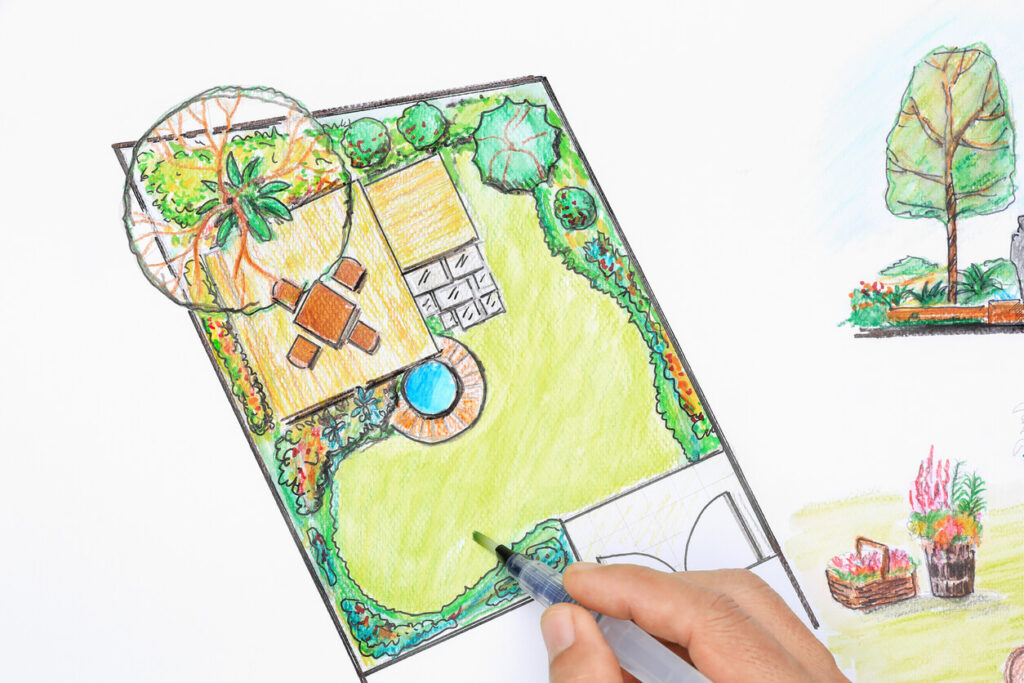Every successful garden season begins with raised bed and container garden planning. It is not enough to just plant some plants and hope for the best. Gardeners must assess the space and the amount of sun that hits different areas on the property and then decide what to grow.
You can plan raised beds and container gardens all year, especially at the end of a season or the start of a new one. But you may be thinking, with so many tasks to do, where should I start? For some helpful tips on gardening success, take a look at this container and raised bed planning guide.
Garden Planning Tools
Planning raised beds and container gardens is easier when you have the right tools to help you stay on track.
- Identify Seed Suppliers – It is worth taking the time to evaluate the seeds that you have and compiling a list of the ones you want to purchase.
- Spreadsheets – Use charts to see when you should plan to plant seeds indoors or direct sowing outside in your area. Then plan which plants will be planted in succession.
- Seed Packet Organiser – A good organizer will help you find your seeds quickly, keep them dry, and take inventory of what you have.
- Planting Space Inventory – Take a look at the containers and raised beds you’ll be using. Refer to the column on your garden planting chart that shows the spacing of plants. This will help you determine the best way to increase or decrease the required space. You can use fabric grow bags, pots, inground, and raised beds.
- Garden Notes – When planning a raised garden or container garden, it is important to review the notes from previous seasons so you don’t make the same mistakes again. You might find relevant notes on pests or varieties that have thrived that you may want to plant again.
- Garden Layout – Draw your garden layouts on graph paper or the computer and write down where and what you will be planting.
- Planting Tracker – Keep track of where and when you plant your seeds or transplants.
Garden Space Planning
You should consider the best places in your yard for growing. You can plan raised beds and container gardens with great success if you spend time looking at your landscape and yard.
- Take a walk around your yard at different times during the day to see how the sun hits each area and how long it is there.
- Is your property protected from the elements? Use strategic placement or add wheels to your planters to protect them.
- What garden pests are you most likely to encounter? Gardening can be difficult for rodents, deer, ground squirrels, and groundhogs. The placement of a raised bed or container garden can be the reason a crop succeeds.
- After you’ve analyzed your containers and beds, you can start planning how to place them in your yard, garden, or patio.
- Think about how you will water your plants and how you will access that water.
Seed Inventory & Organizthemg
Make a list of all your seeds and note where they came from. This is a great way to keep track of your seeds, where they should be ordered from, and which varieties you are most fond of. This will allow you to determine which plants can be sown in succession for continued harvests throughout the season. It won’t seem so overwhelming once you know what you have and what, when, and how you want to plant them.
Seed Storage
Seed storage containers can make a big difference in seed organization. Seed storage must keep seeds dry from moisture, protected from sunlight, and provide enough space to catalog different types of seeds.
Digital Planting Chart & Garden Design
Use and create vegetable, fruit, herb, and flower planting charts.
As a source for all your gardening needs, these charts are an excellent resource for planning your container and raised garden. They should contain something that resembles this list.
- Planting charts for each growing zone
- What you can plant in each region
- Information about planting depth, spacing, and days to maturity.
- When it is best to sow indoor seeds
- When it is best to sow seeds in the garden
- When you should transplant your seeds
- When you should harvest
- Companion planting
- Templates for design layout
Seven Tips for Raised Bed & Container Plant Planning
- Take a walk around your garden and evaluate what you’ll be planting in it.
- Review previous seasons’ notes on
-
- Sun exposure
- Weather and wind considerations
- Prior pests and diseases
- Prior crop successes and failures.
- Evaluate your seed supply.
- To ensure you have the best Order seeds early chance of getting the variety you want, order seeds early.
- Inspect your garden supplies.
- Purchase soil, row covers, tools, fertilizers, and more.





